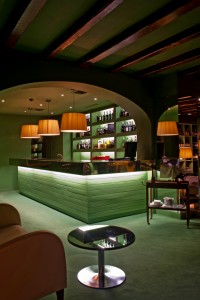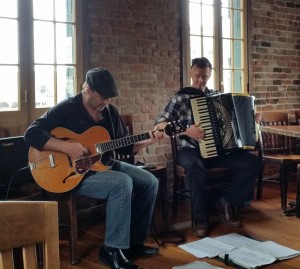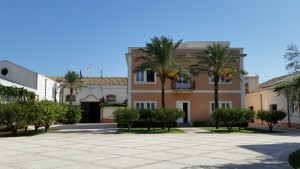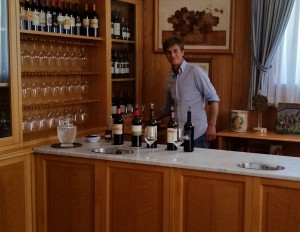For us, wine tasting is fairly rudimentary: rent a car, drive to the wineries, go from place to place sampling as much as we feel like with ample prudence, then drive back to wherever we started the day. We watch tourists pour off of buses with snobbish scorn: “What do they know about wine?” Even worse are the stretch limos that shuttle bachelorette parties from winery to winery, fifteen previously over-served twenty-somethings who scream and giggle and generally drive both winery employees and serious tasters to run, not walk, in the other direction. And it’s not just giggly girls. We see long black Cadillacs pull up with a gang of conventioneers playing hooky in Wine Country. They can disrupt a tasting room from the moment they enter. Maybe some of these people really do appreciate what they’re tasting, but whether because of noisiness or haughtiness they do spoil the experience for us and maybe everyone else.
And then once – just once – we were the ones filling the limo with people who had little or no familiarity with wine tasting. At one point in his career, Steve led a national consulting practice and held a leadership meeting on a Friday in Portland, Oregon. Since there was budget for “team-building”, he invited the consultants and their significant others to take a day trip that Saturday to the Willamette Valley. The event was held in mid-January, and the day dawned brisk and sunny.
In a rented, chauffeured stretch, nine of us headed for the hills of northern Oregon. The Willamette Valley is only forty minutes from downtown Portland, if there is no traffic and at that time of year visitors and thus cars are few. None of Steve’s colleagues had been wine tasting before so there was both expectancy and a little trepidation in the car as we drove south.
If you arrive in the little town of Dundee, you’ll find Argyle winery on the main road. Argyle is best known for its sparkling wines and Chardonnays and the Pinot Noirs aren’t bad either. They have a tasting room, with the vines elsewhere in the valley. Our friends seemed a little ill at ease at first but a few sips loosened them up. “Hey, this is fun” was the general sentiment.
We continued down the Pacific Highway, had lunch and turned up Archery Summit Road, leading to the Archery Summit, Domaine Drouhin and Domaine Serene wineries. Each one was higher up the hill and therefore had a better view. This was really the heart of Pinot Noir country, with several award winning wines for all of us to try.
We all learned a few things that day. For one, Steve’s colleagues learned about wine tasting. The day truly did build some team spirit, experiencing new things together. (It was our first trip to the Willamette Valley, so we were learning as well.) It was fun to see our friends open up to the wine tasting experience. Of course, they had all drunk wine before but few if any paid much attention to it. They had rarely if ever compared wines side by side and tried to detect the differences. It was our pleasure to share that appreciation with them.
We quickly realized that it’s nice to have someone else do the driving. Of course, that makes a visit more expensive but it is also less stressful. We still didn’t want to get drunk, but we could take a few more second sips without worries. The stretch limo added some glamor, but other than for the size of the group, it wasn’t necessary; just being chauffeured around was more than sufficient.
And we re-learned that wine tasting in the off-season offers its own rewards: no buses, no crowds, and time to savor the wines because the server wasn’t stressed either. If ever life presents you with the chance to visit Wine Country that way, take it.



